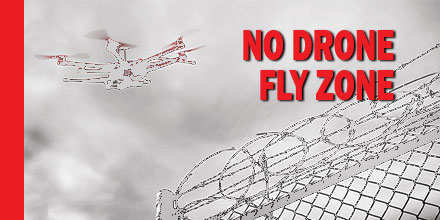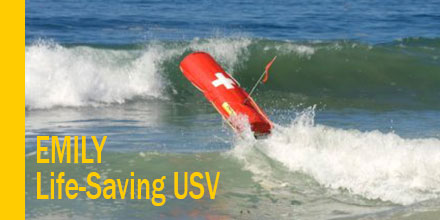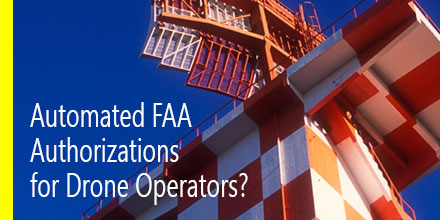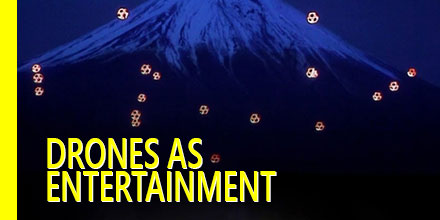
Cyber vulnerabilities.
This is the reason given in a U.S. Army memo that orders troops to end all use of DJI drones for operations.
This a huge announcement, and was quite surprising, given that DJI drones are currently the Army’s top choice for an off-the-shelf UAS solution.
The memo released August 2, came from Lt. Gen. Joseph H. Anderson who serves as the Army’s deputy chief of staff for plans and operations. It states, “cease all use, uninstall all DJI applications, remove all batteries/storage media from devices, and secure equipment for follow on direction.”
The memo cited “increased awareness of cyber vulnerabilities associated with DJI products.” No other additional information was provided.
Off-the-shelf solution, no more?
Just as consumers have flocked to DJI drones, so too, the Army. Though not a battlefield drone, DJI drones are used in support of a variety of Army operations. In fact, the Army’s Aviation Engineering Directorate has issued over 300 separate Airworthiness Releases for DJI products in support of various missions.
This memo amends the existing Pentagon guidance for the domestic use of unmanned systems that was finalized in Feb. 2015.
So, what does this memo mean for Army units currently using DJI products?
For many, it’s a minor inconvenience. For others, a huge headache, in terms of identifying, securing, inventorying, and storing the drones. After all, the memo covers “any system that employs DJI electrical components or software including, but not limited to, flight computers, cameras, radios, batteries, speed controllers, GPS units, handheld control stations, or devices with DJI software applications installed.”
The Army indicated that they’ve received this guidance memo and are reviewing it.
Impact on DJI
Clearly, the memo caught DJI unaware. The company said in a statement, “they were surprised and disappointed to read reports of the U.S. Army’s unprompted restriction on DJI drones.”
It also said the company was not consulted during the decision-making process. DJI plans to reach out to the U.S. Army to gain better understanding of the cyber security concerns.
Given the sensitive nature of Army operations, the memo is a step in the right direction as far as some cyber security experts are concerned.
Hackers exposed the vulnerabilities of the Phantom series – breaking in and manipulating the GPS software and disrupting “geofences” designed to keep the drone out of no-fly zones. Certainly, this raised alarm bells.
However, it was a request in May from DJI that appeared to really raise concerns. The request? Users need to register DJI products with the company. If not registered, the DJI product would suffer a decrease in speed and range…even the ability to stream video.
Industry insiders started to ask questions. If DJI corporation could manipulate that, what else could it do? Was the company sharing videos captured by these drones?
DJI denied any such activity. “When you fly a DJI drone,” DJI said in a statement in April 2016, “nobody but you can see the live video feed or the recorded video it generates – unless you decide otherwise.”
Uncertain future
DJI appears anxious to discuss and resolve any concerns the U.S. Army has about DJI products. Whether that conversation occurs, remains to be seen. And amid the lingering questions, one thing remains true: the Army's go-to, off-the-shelf solution seems no more.
 Call it the ultimate No Drone Fly Zone.
On Aug. 4 the Department of Defense (DoD) released classified guidelines for military personnel. The guidelines focused on available actions in the event of unauthorized drone intrusion over or around a military installation.
The Federal Aviation Administration (FAA), along with other inter-agency partners, helped develop the guidelines. It follows classified guidance that was previously provided to the services and installations in early July.
“Protecting our force remains a top priority and that’s why DoD issued the specific, but classified policy that details how DoD personnel may counter the unmanned aircraft threat,” said United States, Navy Capt. Jeff Davis.
Call it the ultimate No Drone Fly Zone.
On Aug. 4 the Department of Defense (DoD) released classified guidelines for military personnel. The guidelines focused on available actions in the event of unauthorized drone intrusion over or around a military installation.
The Federal Aviation Administration (FAA), along with other inter-agency partners, helped develop the guidelines. It follows classified guidance that was previously provided to the services and installations in early July.
“Protecting our force remains a top priority and that’s why DoD issued the specific, but classified policy that details how DoD personnel may counter the unmanned aircraft threat,” said United States, Navy Capt. Jeff Davis.

 The Duluth Fire Department in Duluth, Minnesota is considering purchasing the Emergency Integrated Lifesaving LanYard (EMILY) drone.
Hydronalix, located near Tucson, Arizona, created and manufactures the 24-pound unmanned water rescue vehicle.
The Duluth Fire Department in Duluth, Minnesota is considering purchasing the Emergency Integrated Lifesaving LanYard (EMILY) drone.
Hydronalix, located near Tucson, Arizona, created and manufactures the 24-pound unmanned water rescue vehicle.
 Cyber vulnerabilities.
This is the reason given in a U.S. Army memo that orders troops to end all use of DJI drones for operations.
This a huge announcement, and was quite surprising, given that DJI drones are currently the Army’s top choice for an off-the-shelf UAS solution.
The memo released August 2, came from Lt. Gen. Joseph H. Anderson who serves as the Army’s deputy chief of staff for plans and operations. It states, “cease all use, uninstall all DJI applications, remove all batteries/storage media from devices, and secure equipment for follow on direction.”
The memo cited “increased awareness of cyber vulnerabilities associated with DJI products.” No other additional information was provided.
Cyber vulnerabilities.
This is the reason given in a U.S. Army memo that orders troops to end all use of DJI drones for operations.
This a huge announcement, and was quite surprising, given that DJI drones are currently the Army’s top choice for an off-the-shelf UAS solution.
The memo released August 2, came from Lt. Gen. Joseph H. Anderson who serves as the Army’s deputy chief of staff for plans and operations. It states, “cease all use, uninstall all DJI applications, remove all batteries/storage media from devices, and secure equipment for follow on direction.”
The memo cited “increased awareness of cyber vulnerabilities associated with DJI products.” No other additional information was provided.
 By the end of the year, several airports are expected to offer automated authorization for drone operators in controlled airspace. The rest of the nation’s airports will follow suit in 2018.
If successful, these automated authorizations will remove a significant barrier to the rapid expansion of commercial UAS operations.
Today, flights in controlled airspace, at certain times of day, or near sensitive locations require authorization from the FAA. Authorization requests can take up to 90 days and require labor-intensive manual approvals.
Today in
By the end of the year, several airports are expected to offer automated authorization for drone operators in controlled airspace. The rest of the nation’s airports will follow suit in 2018.
If successful, these automated authorizations will remove a significant barrier to the rapid expansion of commercial UAS operations.
Today, flights in controlled airspace, at certain times of day, or near sensitive locations require authorization from the FAA. Authorization requests can take up to 90 days and require labor-intensive manual approvals.
Today in  From surveying and mapping to search and rescue efforts, drone technology is disrupting a host of industries. It begs the question: Is the entertainment industry next?
Large companies, such as Intel and Disney, have moved beyond drone entertainment as possibility...to reality.
Drone racing and aerial acrobatic displays may be some of the earliest forms of drone entertainment. However, with Intel and Disney entering the fray, the entertainment bar may be rising -- literally.
In 2016, the companies revealed plans for a unique collaboration of a drone-based light show.
From surveying and mapping to search and rescue efforts, drone technology is disrupting a host of industries. It begs the question: Is the entertainment industry next?
Large companies, such as Intel and Disney, have moved beyond drone entertainment as possibility...to reality.
Drone racing and aerial acrobatic displays may be some of the earliest forms of drone entertainment. However, with Intel and Disney entering the fray, the entertainment bar may be rising -- literally.
In 2016, the companies revealed plans for a unique collaboration of a drone-based light show.
 Drones have transformed a number of industries and services in addition to creating many new ones. The growth of drones is proof of how advancements in technology help perform certain tasks better and more efficiently.
Today, engineers are developing software that allows a swarm of drones to map areas affected by oil spills. Their work is inspired by the swarm and communication behavior of insects and birds.
However, given the very location of these disasters, surveying and mapping oil spills at sea or along coastlines is a difficult task. Accurately assessing the level of damage can be a tricky proposition. Researchers believe drones could provide a solution.
Just as ants converge in the thousands to find and carry food to their colony, engineers believe a swarm of low-cost drones could aid in the mapping of oil spills.
Drones have transformed a number of industries and services in addition to creating many new ones. The growth of drones is proof of how advancements in technology help perform certain tasks better and more efficiently.
Today, engineers are developing software that allows a swarm of drones to map areas affected by oil spills. Their work is inspired by the swarm and communication behavior of insects and birds.
However, given the very location of these disasters, surveying and mapping oil spills at sea or along coastlines is a difficult task. Accurately assessing the level of damage can be a tricky proposition. Researchers believe drones could provide a solution.
Just as ants converge in the thousands to find and carry food to their colony, engineers believe a swarm of low-cost drones could aid in the mapping of oil spills.
